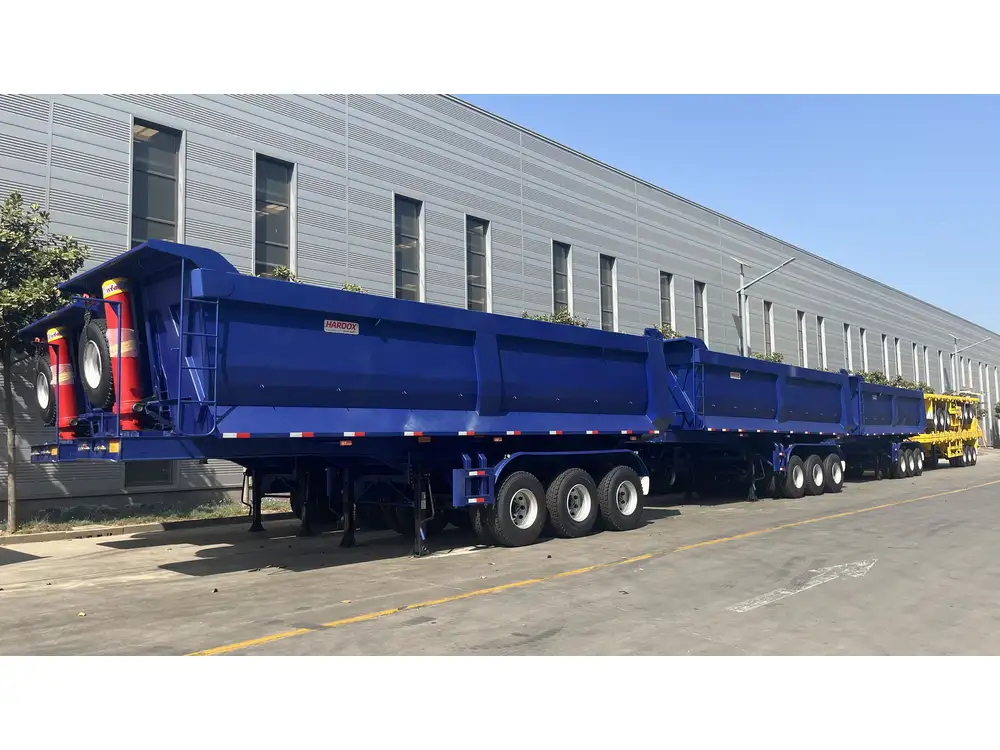In the intricate world of semi-trailers, every component plays a crucial role in ensuring safety, efficiency, and performance. Among various elements that make up these massive transport vehicles, the feet—or landing gear, as they are colloquially known—stand out as vital fixtures. This article delves into everything you need to know about the feet on a semi-trailer, providing detailed insights to enhance your understanding of their function, types, maintenance, and more.
Understanding Landing Gear: The Feet of a Semi Trailer
The term “landing gear” refers to the retractable structures found on semi-trailers. These components assist in supporting the front of the trailer when it is detached from a tractor. The primary function of landing gear is to stabilize the trailer, allowing safe loading and unloading without tipping or swaying.
Structure and Functionality of Landing Gear
Design Components
Landing gear typically comprises several key parts:
- Legs: These are vertical components that support the weight of the trailer when detached.
- Gearbox: The mechanical assembly that allows the legs to be lowered or raised, usually operated by a manual crank or an electric motor.
- Feet or Pads: Positioned at the bottom of each leg, these provide an extensive and stable base to distribute the weight evenly on the ground.

Types of Landing Gear
Various configurations of landing gear exist, tailored to meet different transport needs. Understanding these differences can improve operational efficiency and safety.
1. Fixed Gear Landing Gear
This straightforward system features fixed legs that do not retract. It provides stability but lacks versatility.
2. Sliding Gear Landing Gear
Slide-type landing gear can adjust based on load requirements, offering flexibility for various trailer types and loads.

3. Electric Landing Gear
Equipped with electric motors, this advanced system allows for quick, effortless adjustment of leg height. Ideal for operators requiring efficiency, especially in busy loading docks.
4. Manual Landing Gear
This type necessitates human effort for operation, relying on a hand crank. While less convenient than electric systems, it remains popular for its simplicity and reliability.
| Type | Functionality | Pros | Cons |
|---|---|---|---|
| Fixed Gear | Static support | Simple, reliable | Limited flexibility |
| Sliding Gear | Adjustable based on load | Versatile | Possibly more complex |
| Electric Landing Gear | Effortless height adjustment | Quick, efficient | Higher initial cost |
| Manual Landing Gear | Requires manual operation | Low cost, durable | Labor-intensive |
Importance of Proper Landing Gear Selection
Selecting the appropriate landing gear can significantly impact operational efficiency. Factors to consider include the trailer type, weight capacity, and frequency of loading and unloading. For instance, heavy-duty applications may necessitate electric landing gear for rapid adjustments, while lighter loads may simply require the reliability of manual gear.

Key Considerations When Choosing Landing Gear
Load Capacity Requirements
Ensure that the landing gear selected can handle the maximum weight of the trailer when fully loaded.Terrain Conditions
Consider the surfaces on which the trailer will operate. Soft or uneven ground may demand wider footpads for better stability.Frequent Usage Patterns
If the trailer experiences frequent loading and unloading, investing in an electric landing gear may save time and reduce operator fatigue.
Maintaining Your Landing Gear: Best Practices
Proper maintenance of landing gear is essential for safety and functionality. Neglecting this aspect can lead to premature wear, failure, or unsafe conditions. Below are best practices for maintaining landing gear.
Regular Inspection Schedule
- Monthly Checks: Inspect for rust, cracks, and wear on mechanical components.
- Lubrication: Ensure that moving parts, such as the gearbox and crank mechanism, receive adequate lubricant to prevent friction and wear.
- Foot Inspection: Regularly examine the footpads for damage or excessive wear, especially if frequently used on uneven surfaces.

Load Management
- Avoid Overloading: Overloading the trailer can stress landing gear, leading to damage.
- Distribute Weight Evenly: Ensure that loads are balanced to prevent undue strain on any one side of the landing gear.
Problems and Solutions
| Problem | Solution |
|---|---|
| Rust on the legs | Clean and apply rustproof spray |
| Footpad damage or wear | Replace with manufacturer-approved parts |
| Difficulty in operation | Check for proper lubrication and adjust gears |
| Uneven height adjustment | Inspect for bent or damaged components |
The Impact of Terrain on Landing Gear Functionality
Landing gear must not only support weight but also adapt to varying environmental factors. Different terrain types can influence the effectiveness and longevity of these components.

Operating on Various Surfaces
- Concrete: Provides a stable surface leading to minimal wear.
- Gravel: Risk of footpad sinking; larger pads can mitigate this.
- Soft Soil: Potential for instability; wider, sturdier feet required.
Weather Conditions
Adverse weather conditions can impact landing gear functionality:
- Rain and Snow: Increased risk of rust and corrosion.
- Extreme Heat: Can cause expansion in materials, impacting operation.
Mitigating these effects through proper foot design and material choice can enhance durability and performance.
Conclusion: Enhance Your Transport Operations with the Right Landing Gear
Understanding the significance of the feet on a semi trailer—commonly known as landing gear—is integral to optimizing your transportation operations. By selecting the appropriate type, ensuring regular maintenance, and considering environmental factors, you can enhance safety, efficiency, and longevity of your equipment.
Choose wisely, maintain diligently, and the road ahead will be smooth and safe.



